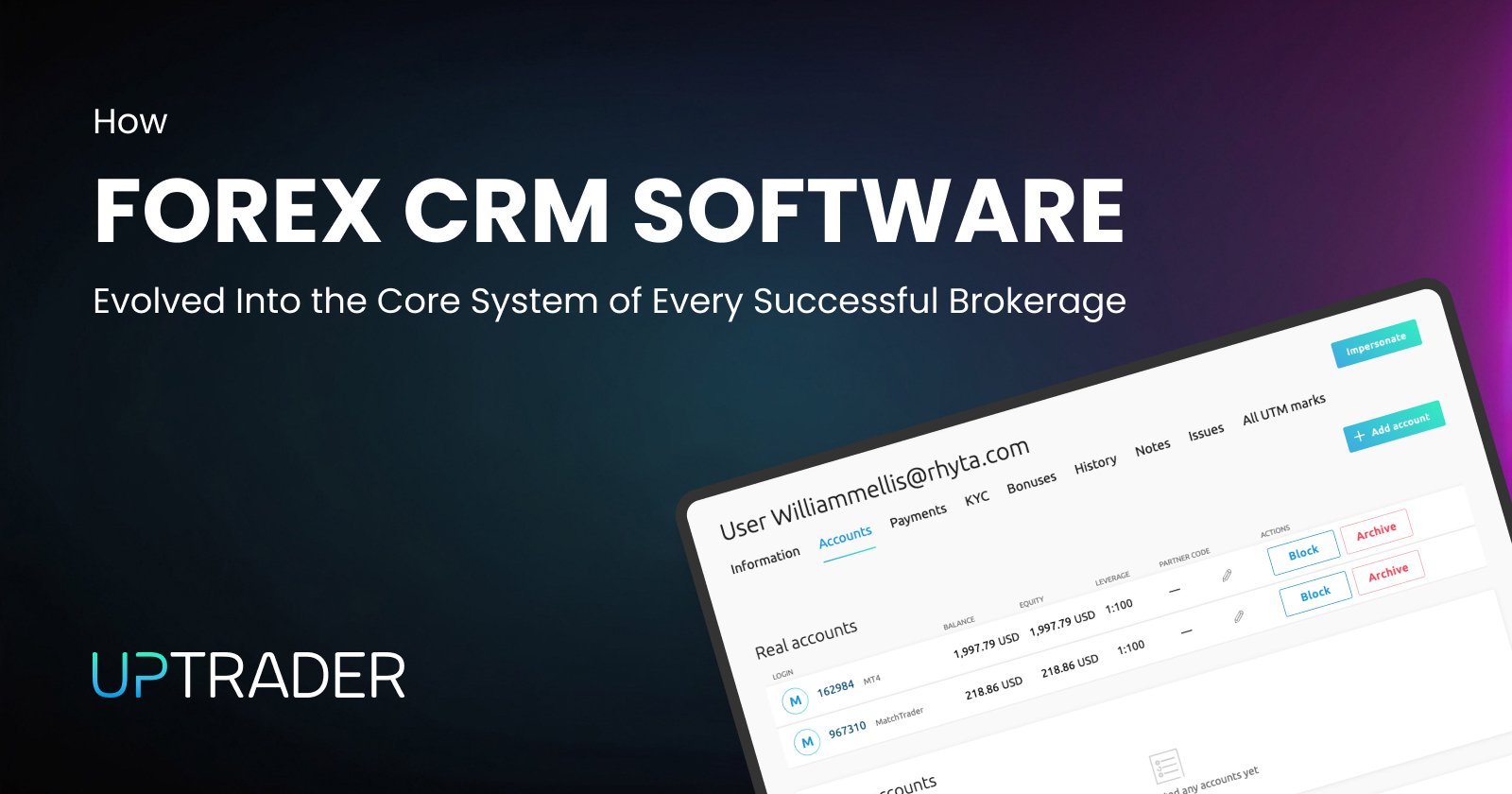Crypto liquidity

Share this publication:
Crypto liquidity refers to the ability of a cryptocurrency to be easily converted into cash or other digital assets without affecting its market price. High liquidity in a cryptocurrency means it can be easily bought or sold in large volumes without causing significant price fluctuations. This makes the trading process smoother and faster for traders. Low liquidity in a crypto market, on the other hand, can lead to slow transactions and high price volatility.
Liquidity is paramount in the cryptocurrency market. A higher liquidity level leads to increased trading volume, signifying active traders and price stability. This aids in effortless and organic growth of the industry. The cryptocurrency market faces a struggle with liquidity due to its inherent volatility and fluctuation in value. When the liquidity decreases in the crypto market, even flagship currencies, like Bitcoin, may face massive repercussions, making it necessary for this sector to keep a keen eye on liquidity levels.
Lack of liquidity might result in a market's downfall, leading to bankruptcies and loss of market value. On the contrary, sufficient liquidity attracts more traders, promotes more deals, and enables more businesses to adopt crypto as their payment option. It is, therefore, crucial for the crypto industry to facilitate trading volume, earn public trust and attract more investors for healthier liquidity levels, ensuring a stable market environment.
Liquid crypto assets
Newcomers to trading and investing in cryptocurrencies often struggle to identify the ones worthy of their investments. Liquidity is a key consideration for those who are new to this market.
What methods can be used to distinguish reputable cryptocurrencies from scammy ones? Liquidity in the cryptocurrency market offers assistance to investors. It doesn’t take long to identify valuable digital assets for investment and weed out potentially fraudulent cryptocurrency schemes.
The liquidity of a specific asset relies on these parameters:
1. The price of the digital asset
2. The trading volume in the last 24 hours
Trading volume is an important factor that many new traders or investors heavily rely on. Experienced investors are aware of the mutual dependence between an asset's price and its trading volumes. Bitcoin, for example, is one of the most liquid cryptocurrencies with a daily trading volume of $21.37 billion. Considering its price, its 24-hour trading volume equals 488,676 BTC.
Speaking about the most popular cryptocurrencies, most of them exhibit the highest cryptocurrency liquidity. Specialists advise against investing in assets with a trading volume of less than 10,000 coins per 24 hours.
However, a lot of them, including Bitcoin, are highly volatile. Bitcoin, for instance, has experienced a steep decrease, losing over 60% of its value in November 2022. Thus, it isn't really feasible to use such volatile currencies for transactions. Stablecoins, such as Tether (USDT) and USD Coin (USDC), which are linked to fiat currency and supported by bank reserves, are a much more practical option.
Crypto market makers
Forex market dominators like the US Dollar, Euro, and British Pound have good liquidity, as they have reigned in the financial marketplace for many years and their corresponding forex markets rarely encounter liquidity issues. In this sector, substantial financial organizations commonly serve as market makers, providing the industry with slim spreads and competitive pricing.
Market makers are unique entities entrusted with the duty of maintaining enough fluidity and effective trading quantity. Regardless of the market circumstances, they are constantly prepared to purchase or sell assets. Whether they are individuals, financial institutions, or automated systems, these entities providing liquidity all share a mutual objective: to streamline the process of asset acquisition and disposal.
Market maker operations incorporate a variety of functions:
Stability of Pricing: Market makers deliver consistent pricing, reducing sharp swings in the asset values.
Consistency in Trading: By maintaining a constant presence in the market, market makers guarantee real-time trading for various institutions and traders.
Adaptability and Variety: Market makers offer diverse trading tools and offer flexibility in terms of settlement alternatives.
Mediation: Market makers are the link between buyers and sellers, establish the starting prices, generate active quotes, and ensure a balanced market.
Market makers essentially serve as brokers that bolster the effectiveness of the market. Their capacity to offer liquidity and shrink bid-ask spreads doesn't just advantage individual traders but also helps to cultivate a stronger, more durable financial system. Through facilitating trading, market makers support the overall constancy of financial markets, permitting participants to carry out trades more competently and with lesser transaction expenses.
Cryptocurrency market doesn’t have this stability yet nor is it currently backed by a substantial number of financial organizations. Despite blockchain technology bringing forth a host of innovative and valuable concepts, its most renowned creation, cryptocurrency, has battled to establish innate worth within the market.
However, the growth and popularity of cryptocurrency markets have resulted in a significant role for market makers. These entities conduct market making in the crypto world, employing similar basic strategies used in traditional financial markets but tailored to cater to unique crypto market dynamics.
The key task of a crypto market maker is to inject liquidity into the digital asset market by persistently placing both purchase and sale orders. This infusion of liquidity is a lifeline for traders who desire to execute their transactions swiftly and seamlessly.
In their endeavor to keep the gap between the bid and sell prices at the minimum, crypto market makers facilitate in lessening the bid-ask spread. To realize this, they harness cutting-edge technology and algorithms. The resultant slender spread proves advantageous for traders, enabling them to conduct transactions at rates that closely match the existing market valuation of the digital asset.
Various Market Maker Categories within the Cryptocurrency Sector:
Individual Market Participants - These are individuals actively engaged in the cryptocurrency markets, striving to reap profits from the difference between buying and selling prices via placing limit orders on exchanges.
Expert Market Making Companies - These specialist firms concentrate on market making across numerous financial tools, cryptocurrencies included. These companies commonly utilize high-tech trading algorithms and technologies to automate their market-making operations.
Cryptocurrency Exchanges - Certain crypto exchanges function as market makers in their own right. They deliver liquidity through matching buying and selling orders on their platforms. Occasionally, these exchanges utilize their funds to facilitate trades and maintain liquidity.
High-Speed Trading (HST) Companies - Using complex algorithms and rapid trading tactics, these firms can carry out numerous orders within fractions of a second. To take advantage of minor price differences, they frequently engage in market making.
Arbitrageurs - By capitalizing on price variations across different exchanges or trading pairs, these traders involve themselves in arbitrage. They contribute to the market's efficiency by minimizing price differences across various platforms.
Automated Market Makers - Traders and firms utilizing sophisticated algorithmic strategies for market making belong to this category. Their algorithms are constantly updating buying and selling prices, depending on the state of the market, the dynamics of the order book, and other significant elements.
Project Initiators or Token Issuers - Some projects and token issuers within the decentralized finance sector might act as market makers for their tokens. To guarantee a fluid market for their assets, they might deliver liquidity to decentralized exchanges.
Traditional Financial Entities - Conventional financial institutions such as proprietary trading companies and hedge funds could also function as market makers within the cryptocurrency environment. Such institutional market makers can bring in substantial liquidity to the market.
Crypto Asset Funds - Investment funds concentrating on cryptocurrencies may involve themselves in market making as part of their investment strategies. Given their resources and expertise, these funds are well-positioned to actively contribute liquidity to the market.
Why having crypto liquidity is a good idea
Organic expansion - Primarily, no method is superior to an organic market expansion in attracting more investment and participation to the crypto sphere. The evolution of this industry is largely dependent on its capacity to minimize fluctuation through the addition of more inherent value and a wider global adoption for transactions.
If present tendencies persist, the crypto environment is geared up to achieve this, with several recent projects emphasizing the value of smart contracts and transnational transactions via crypto assets. Excluding any unexpected events that may hinder this progress, the industry is advancing towards a more stable state, notably improving the liquidity levels universally.
Rapid development - The integration of Gold-i's Crypto Switch solution into the Hidden Road financial credit network is a positive development as it promotes robust cryptocurrency liquidity. It does so by harnessing the API features of Hidden Road to ensure dependable liquidity aggregation for cryptocurrencies. This development promises a transformation of conventional trade settlements and could bring about substantial advancements, such as allowing for instantaneous trade duplication.
Gold-i's continued efforts to foster a solid cryptocurrency trading environment play a significant role in this process. The company's Crypto Switch is noted for efficiently providing cryptocurrency liquidity to institutions, as it connects to various cryptocurrency market makers and exchanges. This provides deep liquidity, along with the advantages of low latency and minimal spreads.
The essential role of Hidden Road in managing both traditional and digital assets is recognized and commended by Gold-i's CEO, Tom Higgins. According to Higgins, Hidden Road has effectively created an operational ecosystem within the cryptocurrency sector. This ecosystem includes vital features like prime brokerage, clearing and funding, thereby reducing risk for counterparties.
Revolutionary product - Digital assets are primarily intended to bring about a revolution in the conventional economy, completely overhauling it. Bitcoin, for example, is constructed as a new way of making payments. Numerous cryptocurrencies aim to enhance the current system, offering more convenience to both everyday users and cryptocurrency owners, through features like lower transaction fees, secured anonymity in transactions, and lack of limitations.
Choosing crypto liquidity providers
Choosing the appropriate provider can be a tough task since this choice has a direct impact on your business. Here are a few aspects that may guide you in selecting the most suitable liquidity provider.
Pricing Strategy
Prices are a crucial determinant when it comes to choosing the perfect liquidity provider for your company. Liquidity providers often have varying pricing models, dependent on the services offered and your budget.
Opt for a provider whose pricing aligns with your business needs and is cost-effective. There's no sense in getting the greatest liquidity service if it eats up all your earnings as service charges.
Therefore, it's recommended to set feasible objectives and hopes and locate a trustworthy liquidity provider within your budget range.
Compliance with Regulation
Financial operations are typically heavily regulated in multiple countries, especially when your operations are on a global scale. Partnering with a regulated liquidity provider is the best approach to reduce risks.
Providers who are unregulated or shady are not dependable, and losing access to liquidity and funds can spell disaster for your customer service.
For instance, financial organizations are subject to strict regulations by the US Securities and Exchange Commission. Any violations can result in hefty fines and potentially affect their capacity to provide liquidity to trading platforms.
Company Reputation
Research client reviews and feedback about liquidity providers to understand more about these businesses. The information gathered from these testimonials can shed light on how these providers operate and treat their clients.
Additionally, feedback can help reveal if a liquidity provider's offerings are genuinely as good as they seem or if the company fails to fulfill its promises.
Products and Services
Investigate the services and solutions offered by liquidity providers and ensure they align with your requirements. Financial firms offer various service packages that you can review and match with your preset requirements.
Customer Support
Highly-rated providers are always prepared to address your issues.
What UpTrader offers in terms of crypto liquidity
UpTrader takes the cryptocurrency matter seriously and as such, has enabled the feature to enter/withdraw decimal values for the highest and lowest cryptocurrency funding amounts. If your company handles a lot of transactions through crypto, it would be beneficial to use our streamlined automated system for topping up your cryptocurrency account.
Here's how our cryptocurrency gateway operates:
The user-friendly API of UpTrader’s crypto gateway is designed to flawlessly blend with any CRM. A distinct wallet, dedicated only to the customer making a crypto deposit, is created and connected with every CRM client. To prevent any confusion, this wallet remains the same for all transactions. Following this, our crypto gateway keeps an eye on the incoming funds to the wallet and transmits the payment details to the CRM, which in turn processes and alters the amounts automatically.
We also provide a specialized solution for Crypto CFDs by combining resources from cryptocurrency exchanges, non-bank liquidity suppliers, cryptocurrency brokers, orders from institutional clients, and hedge funds. As a result, we can offer brokers the deepest liquidity pool.
Features of our offering include:
- BTC spread starting at $0.1
- Marginal requirements of 20%
- 7 liquidity platforms
- Rapid execution starting from 12 ms
- Around-the-clock technical support all year round
By partnering with UpTrader, you benefit from our expertise, high-stability product, and excellent pricing for large volumes at premium levels.
Specifications of our crypto CFD pairs:
- 100 Crypto CFD pairs
- Marginal requirements of 20%
- Available for trading 24/7/365
Risks connected with crypto liquidity
Volatile assets & the skepticism of general public
Even years after the birth of Bitcoin, one of the most widely recognized cryptocurrencies, it remains largely speculative. It fails to deliver a robust technical or practical worth to stabilize its market prices. This implies that the market is primarily ruled by speculative consumer demand.
This further implies that the market can experience abrupt price hikes due to increased buyer interest, but equally, a sudden drop in demand could lead to serious economic falls. What's worse is that there are no effective means to offset the substantial price fluctuations in the market, since cryptocurrency value largely depends on the public's perception.
Hence, liquidity plays a crucial role in the crypto sector. If liquidity declines, leading to a massive withdrawal of traders, even the major currencies are not exempted from severe impacts. Additionally, solutions for cryptocurrency liquidity are fewer in comparison to traditional finances like fiat currency and stocks.
As of now, most central banks show no interest in injecting liquidity into crypto markets, leaving non-bank liquidity providers with the responsibility of ensuring adequate funds. While there's a growing prime broker and market maker sector, depending on smaller entities to provide adequate liquidity poses challenges.
In a nutshell, the sector grapples with maintaining ample liquidity due to its intrinsic volatility and value concerns. To put it plainly, it is imperative for the crypto industry to monitor liquidity levels in different sectors vigilantly, as any significant fluctuations could trigger a major financial downturn.
Though various mechanisms exist to provide superficial relief to low liquidity crypto sectors, their efficiency is not guaranteed, and they can't protect the industry from potential downturns. Quick liquidity boosts, institutional rescues, among others, are mere stopgaps for the deep-rooted issues discussed above.
Presently, Bitcoin has a lot of liquidity. Nevertheless, even this flagship digital currency grapples with maintaining favorable price levels and enticing investors from outside the crypto realm. This is a clear indication that the industry needs to revise its perspective and endeavor to apply revolutionary blockchain technology more pragmatically. If not, the industry will continue facing liquidity issues in the future, leading to more downturns and a potential market collapse.
Liquidity aggregation for the crypto market
Liquidity aggregation involves pooling buy/sell propositions for a particular asset from diverse origins and routing them to decision-makers. This operation is critical in producing favorable conditions for substantial volume cryptocurrency trading at a price close to the market rate. It achieves a relative equilibrium between supply and demand through this consolidation of liquidity from various sources, helping to circumvent unfavorable market circumstances such as slippage and spread, which hinder trading effectiveness.
The operation of liquidity aggregation is confidential. Crypto liquidity aggregators take in liquidity from major exchanges and simultaneously form their liquidity pools, thus enhancing transaction volume. Consequently, clients linked to these aggregators perform dual roles as both liquidity consumers and providers, thereby achieving a perfect equilibrium between buyer demand and seller supply levels. Through the formation of a liquidity hub, these aggregators draw from various external sources to supply ample liquidity to all trading instruments, thereby maintaining stable prices even amidst unforeseen high volatility in the cryptocurrency market. A notable instance of such a system is the Marksman liquidity hub, which provides organic liquidity services.
In the crypto world, market liquidity plays an integral role in moderating factors that heighten price volatility. Its aggregation mainly seeks to curtail the influence of specific large-scale investors, also known as whales, who possess the financial muscle to alter the price trend of virtually any asset on any market. The consolidation of financial flows from multiple sources into one liquidity pool through liquidity aggregation also allows for ongoing consolidation of the order book. This guarantees instantaneous execution of both buying and selling transactions, thereby conferring an advantage when purchasing assets at the market price.
Advantages of liquidity aggregation for the crypto market
Let's begin by exploring the primary advantages of liquidity aggregation within the realm of cryptocurrency.
1. Amplified Liquidity and Market Depth Enhancement
The crypto market is highly reliant on liquidity, making liquidity aggregation an essential element in ensuring a stable trading environment. The aggregation process consolidates a substantial amount of funds for trading specific crypto assets, thereby enriching the market's depth. This enhances the trading experience by facilitating smoother execution of large volume orders. Additionally, higher liquidity levels enable participants to operate seamlessly across both spot and futures markets without the challenges of low market depth or delays in order fulfillment.
2. Increased Market Accessibility and Enhanced Transparency
Higher transparency levels help identify instances of market manipulation where high-value trades by whales may skew market trends to their advantage. Utilizing multiple liquidity providers' resources helps present a clear and accurate depiction of the market and mitigate issues related to market manipulation and insufficient liquidity.
3. Quicker Execution of Orders
It's commonly observed that participants experience order execution speeds far slower than those promised by trading conditions. In such scenarios, if a transaction cannot be executed at the desired price in time, slippage occurs, forcing participants to settle for the next price on the list. The lower the execution speed, the more significant the slippage. The slippage level is directly related to the liquidity level. In the course of aggregation, liquidity amplifies as funds from various sources get diversified across different trading tools.
Disadvantages of liquidity aggregation for the crypto market
Let's examine the main drawbacks linked to liquidity aggregation.
1. Latency
Despite advancements in electronic trading technology, flaws in systems and procedures, especially those involved in cryptocurrency market liquidity aggregation, lead to certain issues, including latency - a delay between the request and the expected outcome. In the realm of liquidity aggregation, latency implies a delay in obtaining information about the status of cash flow distributions from different liquidity providers. This impacts trading efficiency, hindering the ability of traders to execute large-scale transactions rapidly.
2. Reliance on External Entities
Cryptocurrency liquidity aggregation is facilitated by specific liquidity providers and technology firms that employ suitable technologies to create and disperse cash flows among markets and trading tools.
Considering this, using liquidity aggregation technology necessitates collaboration with a liquidity aggregator, thereby binding the firm to entirely depend on a third-party platform. This requires trusting the safeguarding of all personal and financial information, as well as the consistency of the services rendered. In essence, engaging in liquidity aggregation involves collaboration and dependency on an external party that provides such a service.
3. Security Risks
Security is regarded as a critical aspect of operations in any financial market or with any financial products. Users of cryptocurrency liquidity aggregators encounter considerable security challenges. Typically, when employing trading platforms that facilitate the cryptocurrency liquidity aggregation process, users must link their accounts to several exchanges, thereby escalating the risk of personal information breaches. However, security protocols designed for simultaneous operations on various crypto exchanges can minimize the likelihood of any form of data theft.
The future of crypto liquidity
While it is difficult to be certain about the future of crypto in general and therefore crypto liquidity given its tumultuous history. Let’s consider one interesting recent development.
Google is going to update their policy regarding Cryptocurrencies and associated products in January 2024. Starting from 29th January 2024, Google will permit advertisements for Cryptocurrency Coin Trust targeting the US, given they meet specific criteria and have been certified by Google.
Cryptocurrency Coin Trusts which have no detected issues and are positively marked will be permitted. These can include, but are not limited to, financial products which enable investors to trade shares in trusts that hold a large amount of digital currency.
This is a big change since 2018 when Google prohibited all cryptocurrency-related advertisements on its platform due to concerns about scam. This move by Google echoed a comparable step taken by Facebook earlier that same year. During that period, Google revealed it had revised its Financial Services Policy to ban advertisements for cryptocurrencies and associated content.
This shift by a large corporation means that crypto currencies are being recognized more and more as legit financial assets and such developments are definitely beneficial for crypto liquidity as well.







